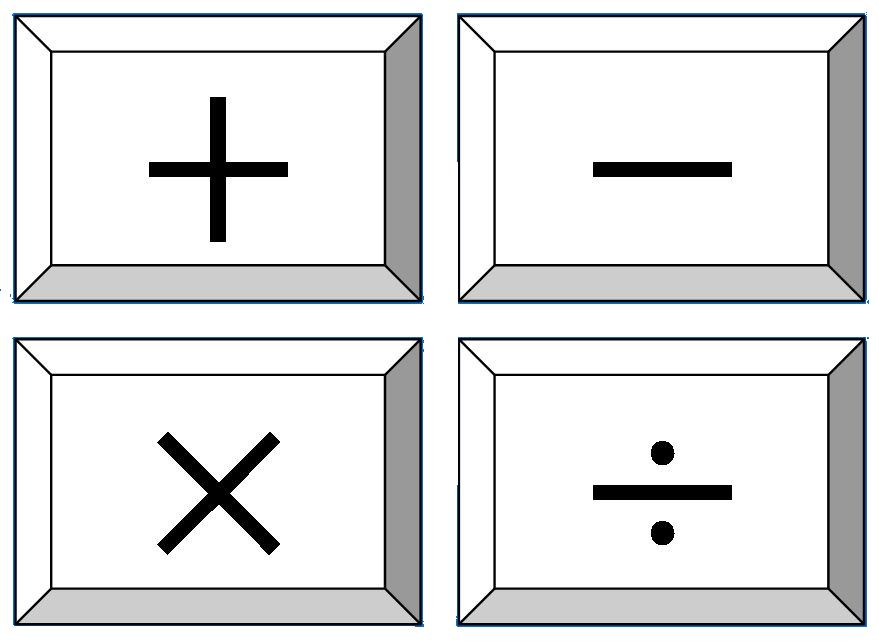Alphabets
In this lesson we will learn about symbols or letters that make up an alphabet, and see that the meaning that we give symbols can be changed. This is important because later in this course we will be learning about two different number systems called Binary and Hexadecimal, and they use symbols differently from Decimal numbers.
Alphabets are a set of symbols used for many written languages https://en.wikipedia.org/wiki/Alphabet . In English we call these symbols letters, and there are 26 of them. Other languages may have more or less symbols/letters. For English, symbols do not have any specific meaning. For example, the ‘u’ in ‘result‘ does not have any meaning, but the 6 symbols together are a word, and it has a meaning that is agreed upon, and is described in an English dictionary. If we jumble up the symbols ‘rustle‘, we still have the exact same symbols, but the different order gives a different word with a different meaning. If we leave a symbol out, ‘reult’ does not have any meaning at all. (for some words, leaving out a symbol creates a different word with a different meaning)
In the Decimal number system that we use on a daily basis, we use an alphabet of 10 symbols: 0, 1, 2, 3, 4, 5, 6, 7, 8, 9. Unlike the A to Z alphabet where the symbols don’t have any meaning, the 10 decimal symbols have an agreed upon meaning, which is that each one of these symbols represents a quantity. For example, if I had a word ‘result’, and I asked you how many symbols are in it, you could hold up all the fingers and thumb on your right hand and your thumb on your left hand. Read the last sentence again, and see if you can find any numbers in it. Nope. Yet those raised fingers and thumbs are a representation of how many symbols there are in the word ‘result’. The point I am making here is that there is the concept of six things (in this case, the symbols in ‘result’), and then there is a single symbol that we all agree represents six: ‘6’ . What if I said that we would use the following alphabet of 10 symbols of to represent the decimal numbers (in the same order) : G, H, Q, 9, $, K, @, A, B, C. Could we still represent the number of symbols in ‘result’. The answer is we could: ‘@’. What about addition? Can I add K + A with this alphabet, and what would be the answer? The answer is HQ . See if you can get the same answer before reading the next paragraph.
In our new SillyDecimal alphabet each symbol is replacing the traditional symbol we use to represent the quantities from 0 to 9. The following table shows you the two symbol sets:
| Decimal | 0 | 1 | 2 | 3 | 4 | 5 | 6 | 7 | 8 | 9 |
| SillyDecimal | G | H | Q | 9 | $ | K | @ | A | B | C |
So K is a replacement for 5, and A is a replacement for 7. K+A is the same as 5+7, which equals 12 with the normal Decimal alphabet. What about in the SillyDecimal system. the answer has the same value. The ‘1’ in the answer 12 is ‘H’ in SillyDecimal, and the ‘2’ is ‘Q’ so the complete answer is ‘HQ’
Exercise
Get a friend to help you with this exercise. Follow these steps
- Have your friend write down 2 Decimal numbers of 3 digits each, and calculate the result of adding them. Your friend does not tell you what the two numbers are of the result of adding them.
- Have your friend translate the the two numbers from Decimal to SillyDecimal, and then tell you the SillyDecimal numbers
- You now add the two numbers you have been given, and you get an answer in SillyDecimal.
- You now translate your answer from SillyDecimal to Decimal and compare it with the answer your friend got in the first step.
- Repeat this process until you get the right answer 3 times in a row.
